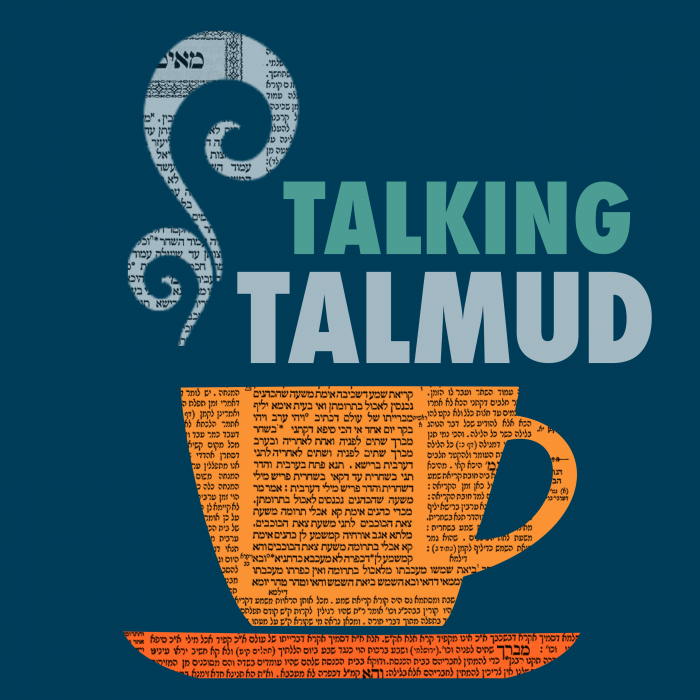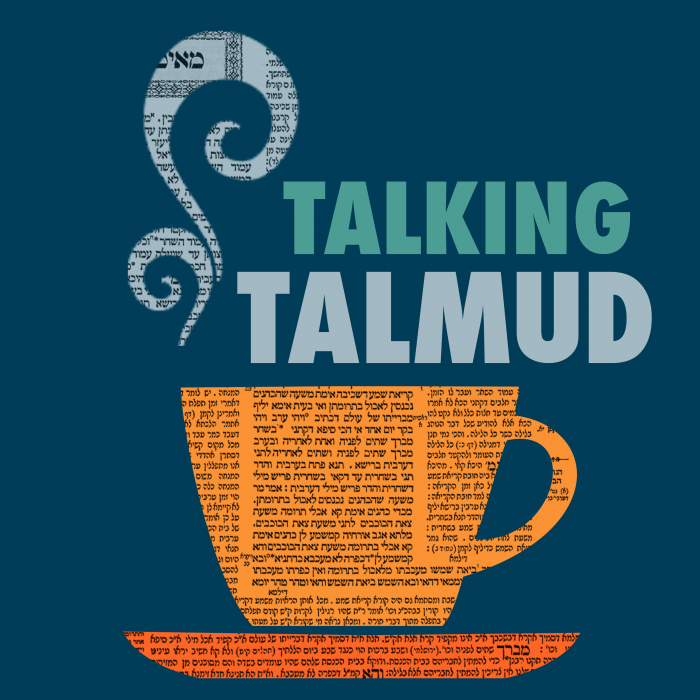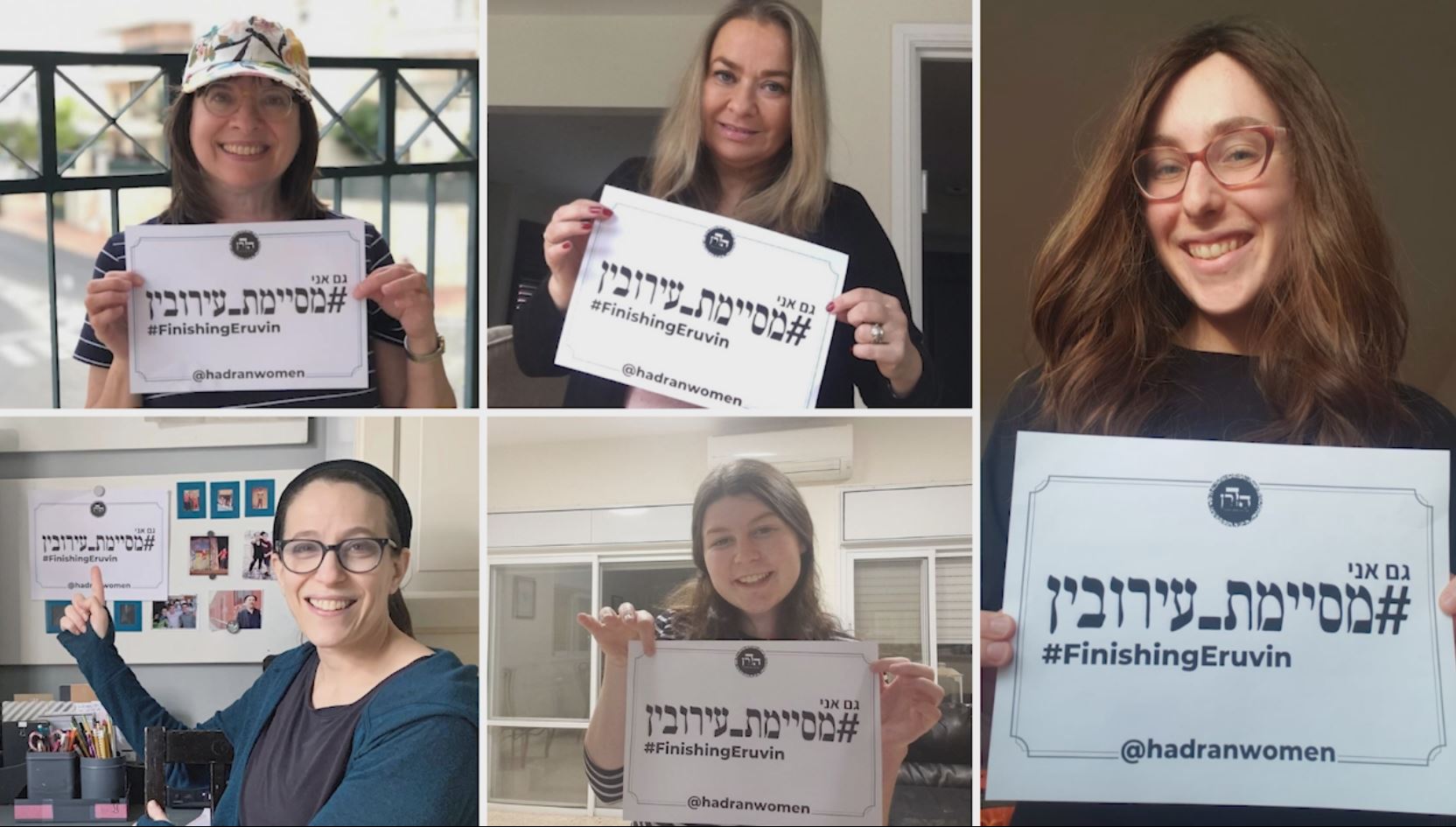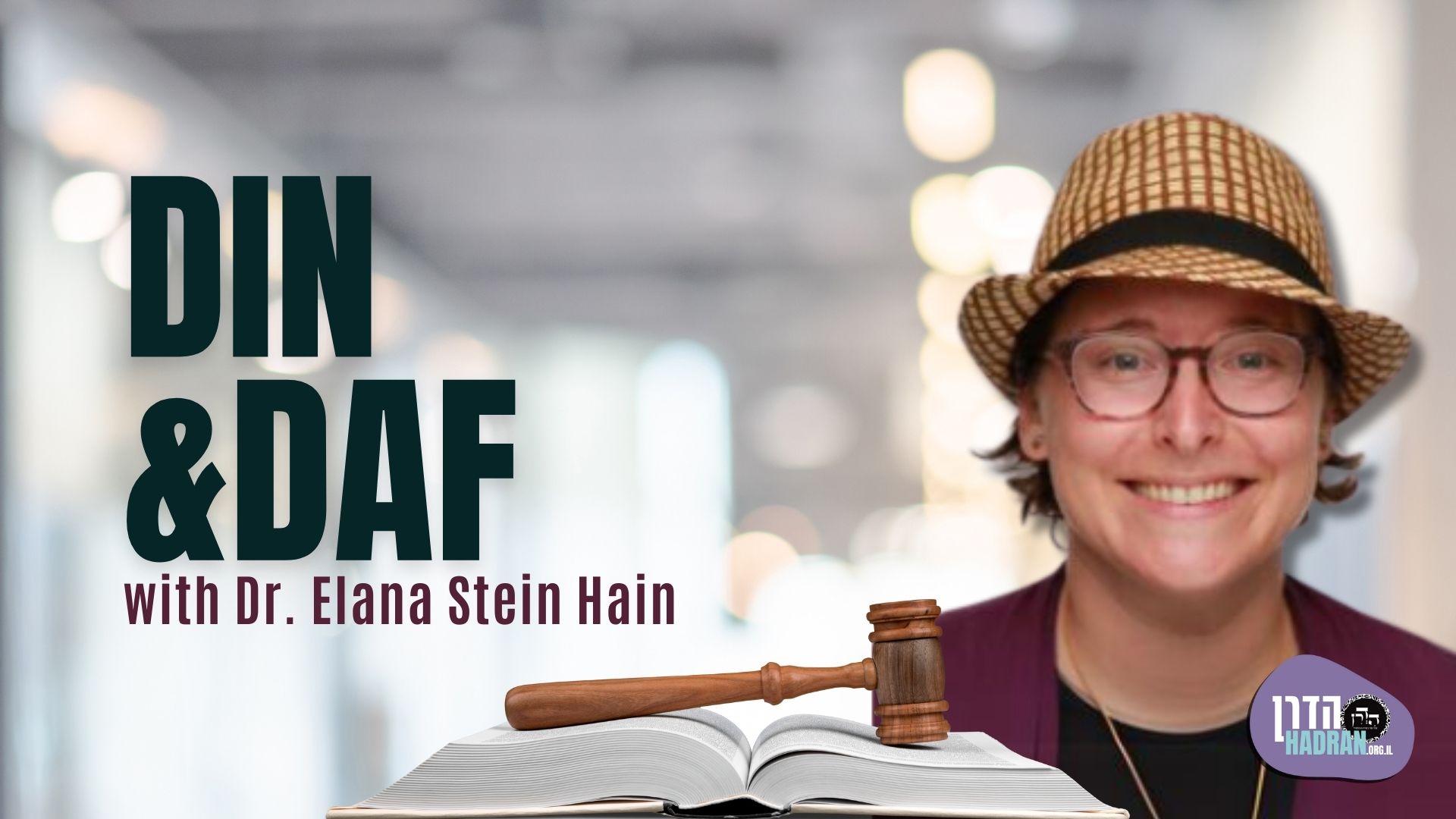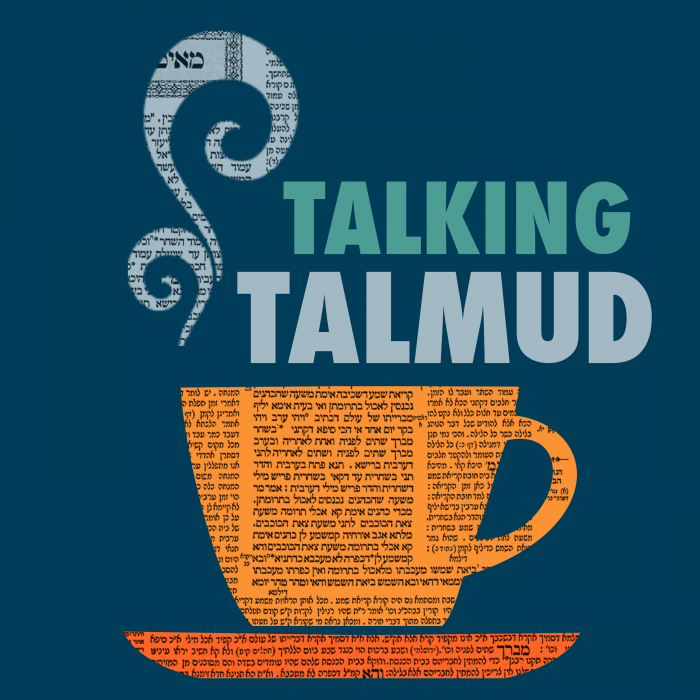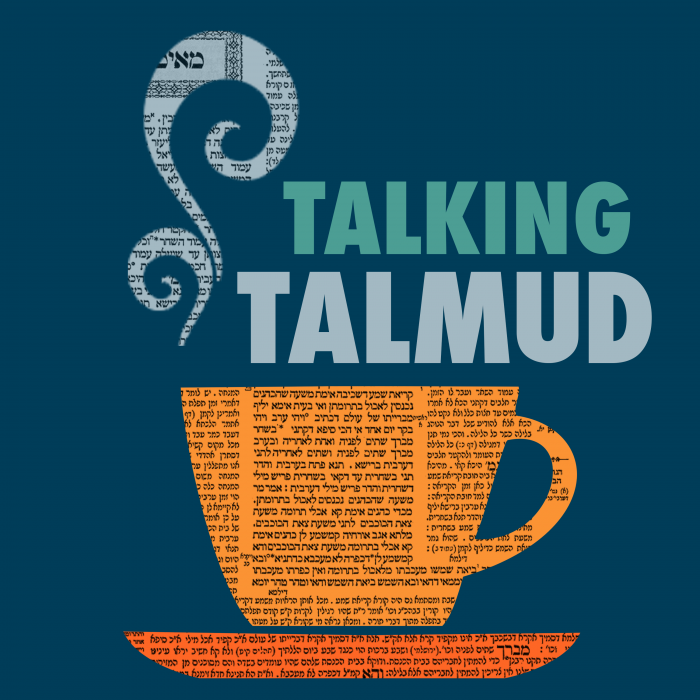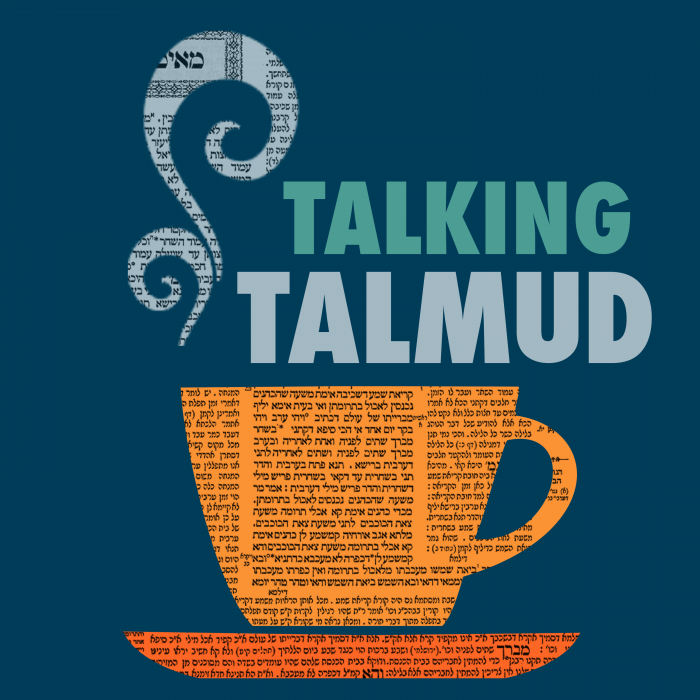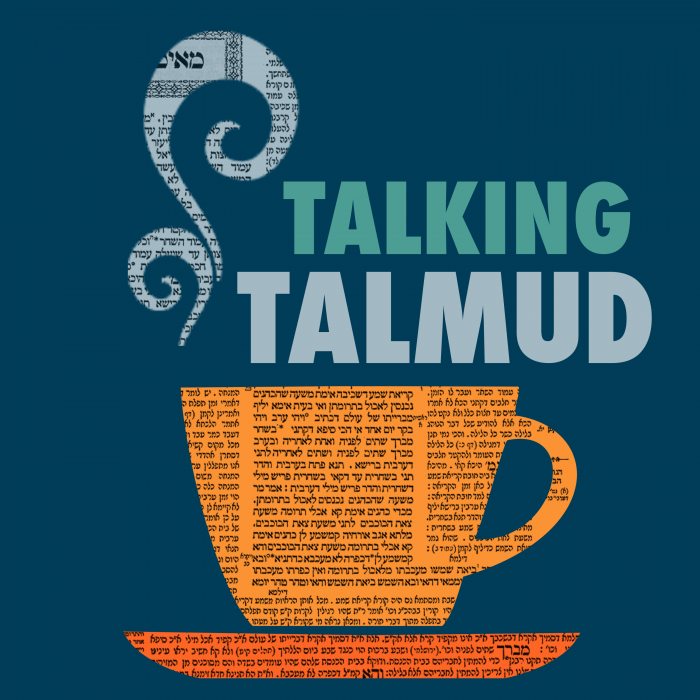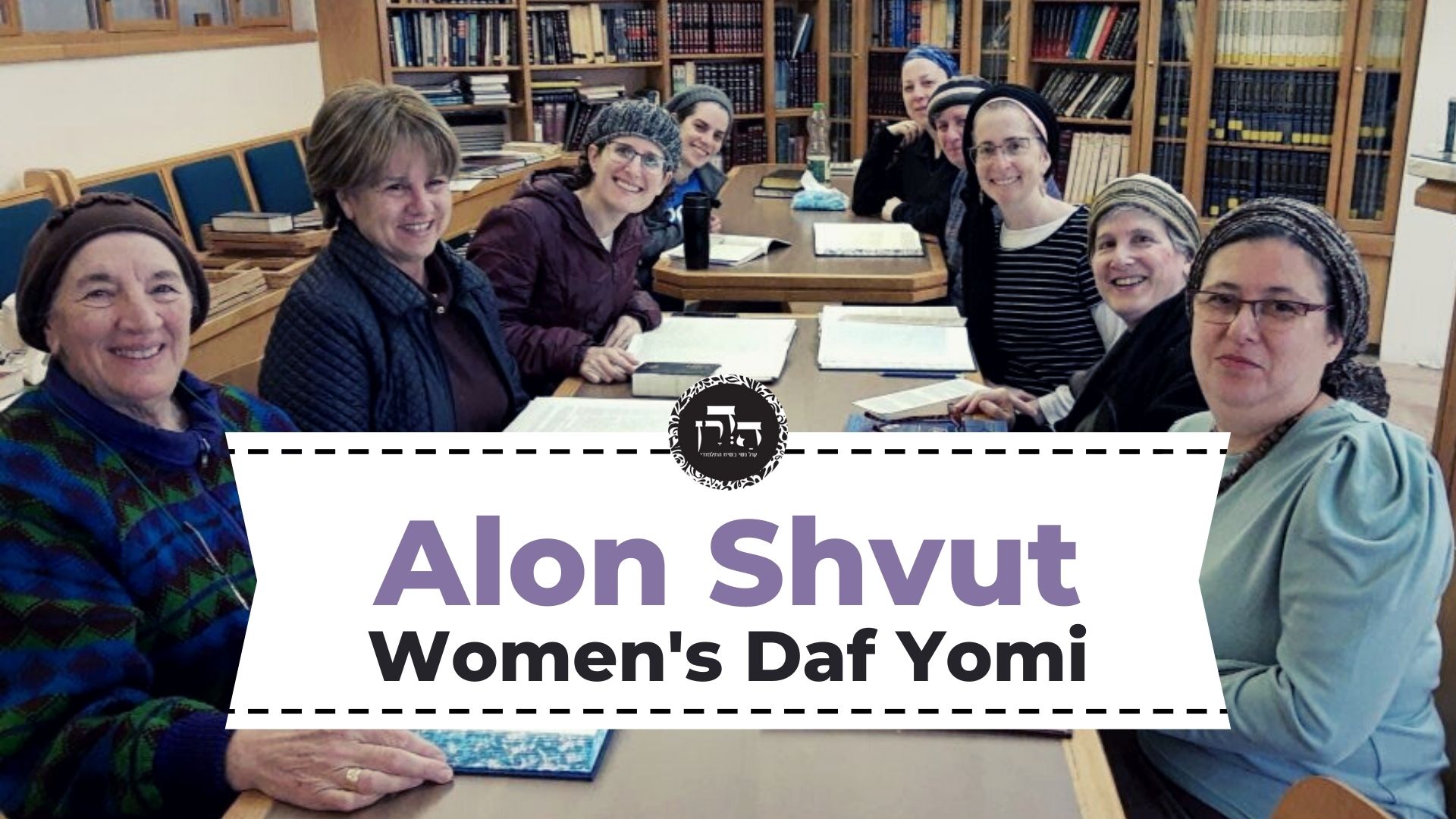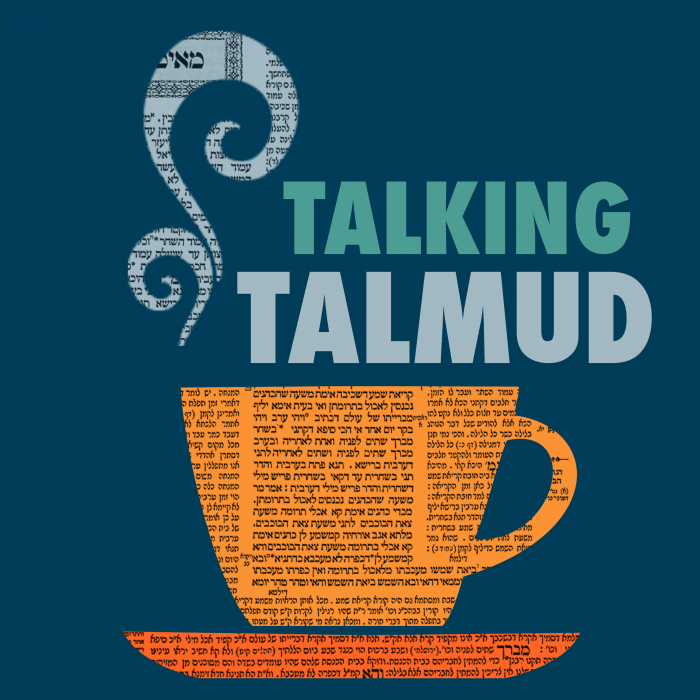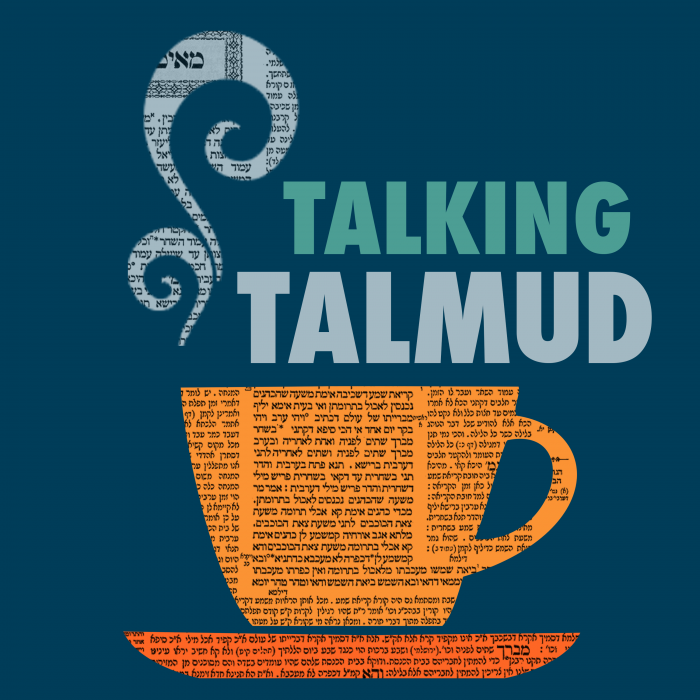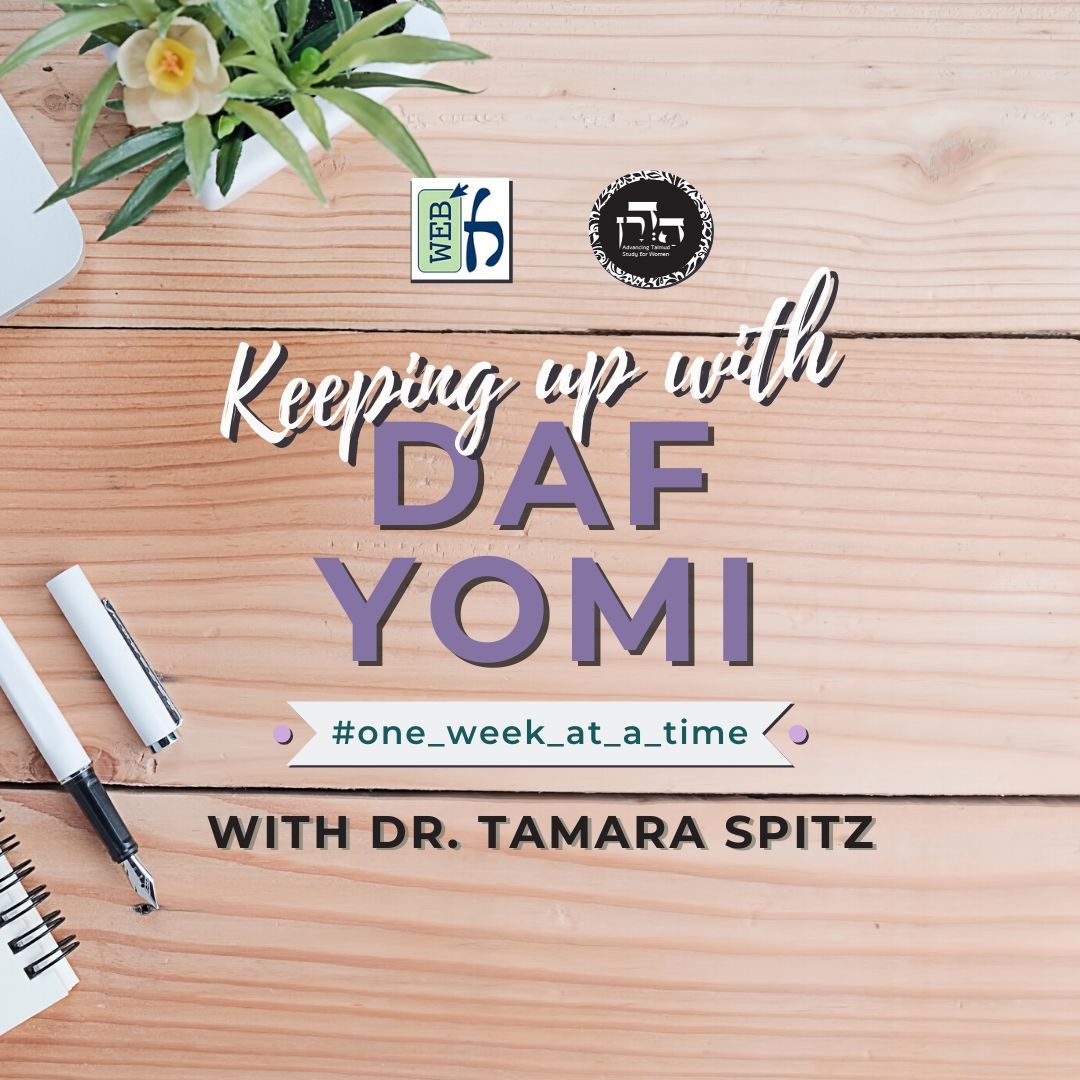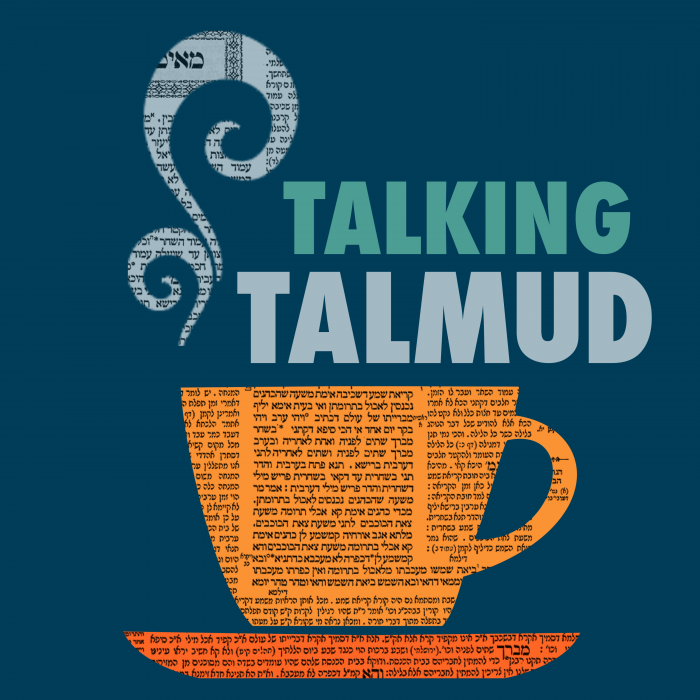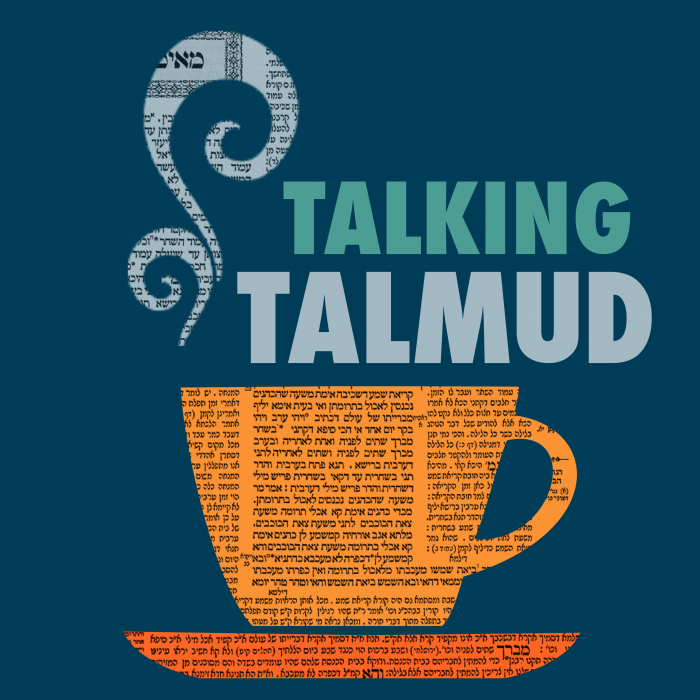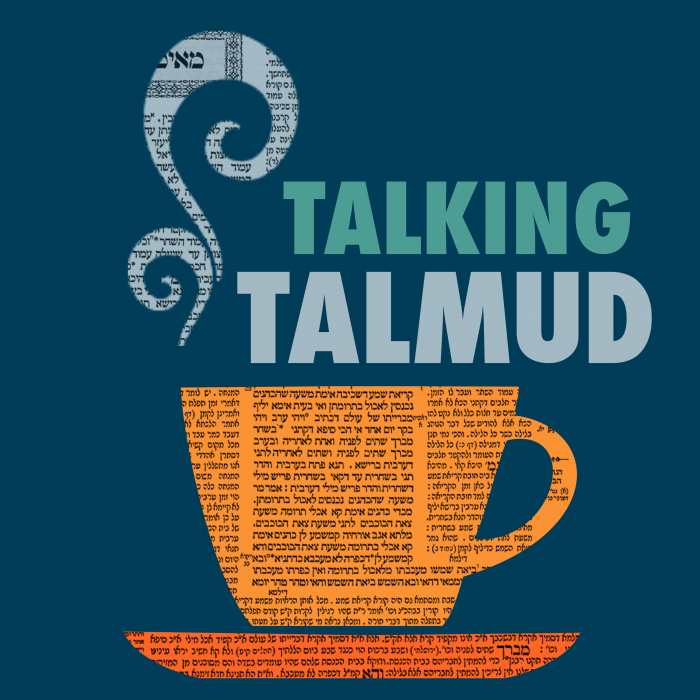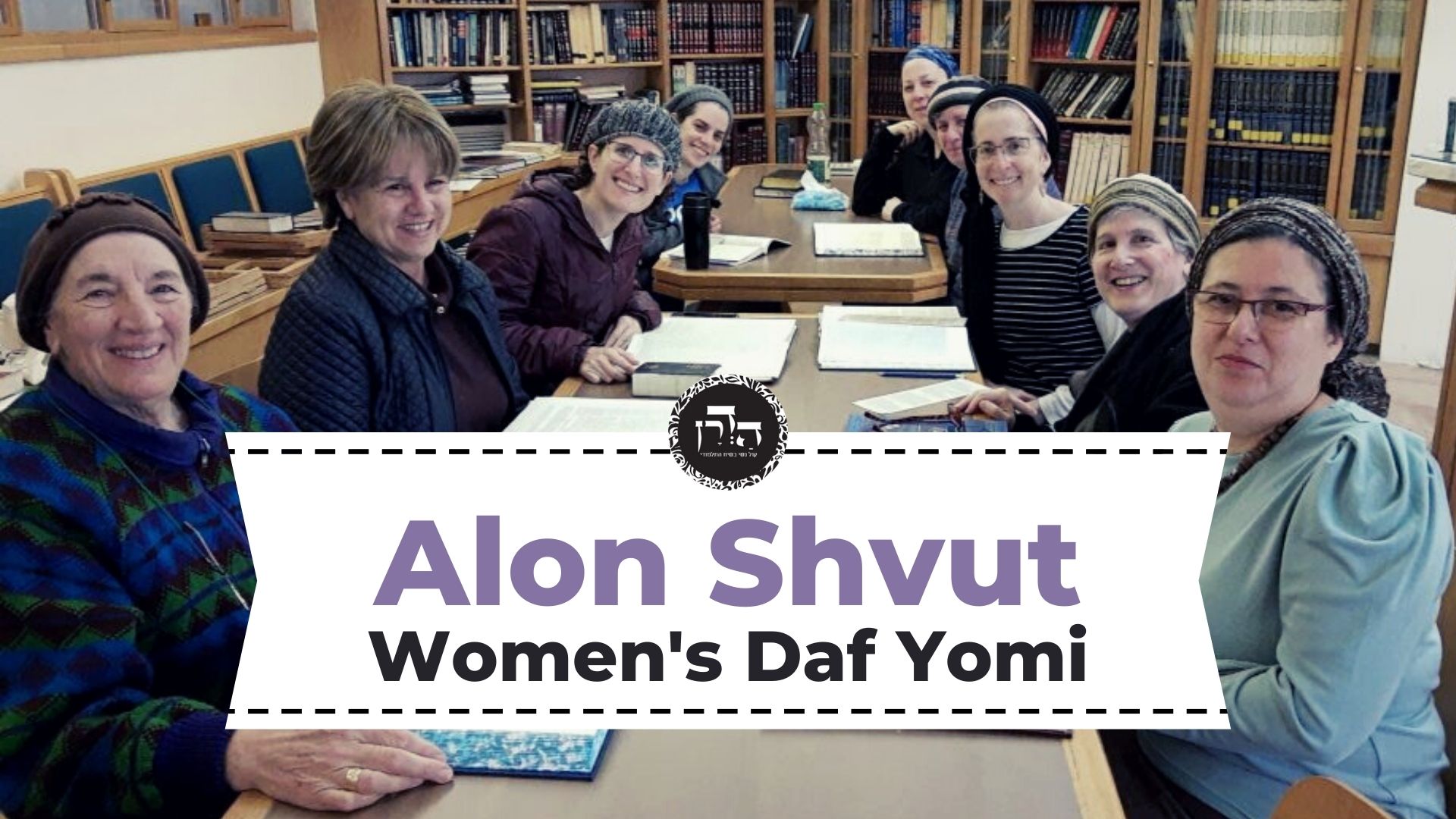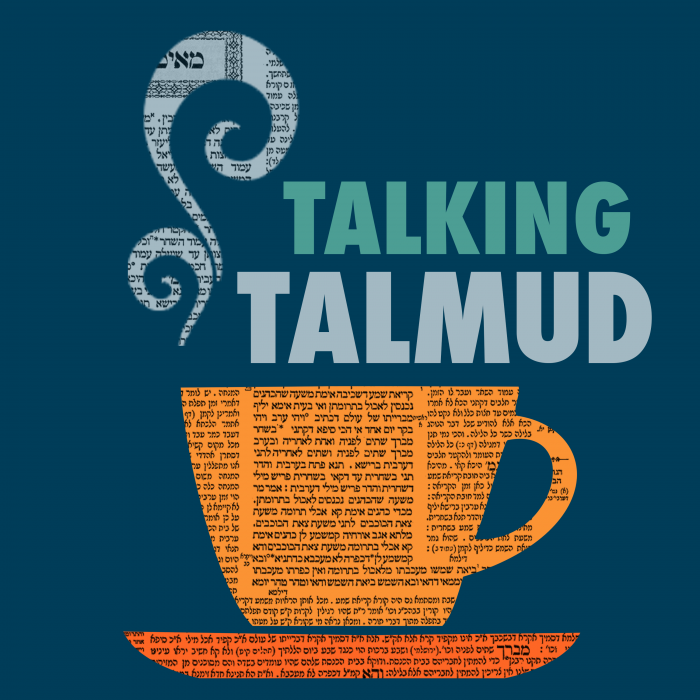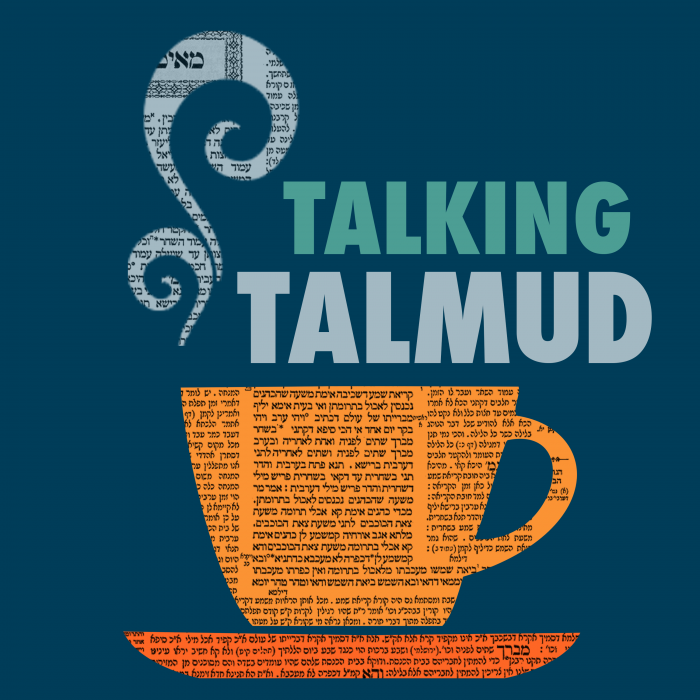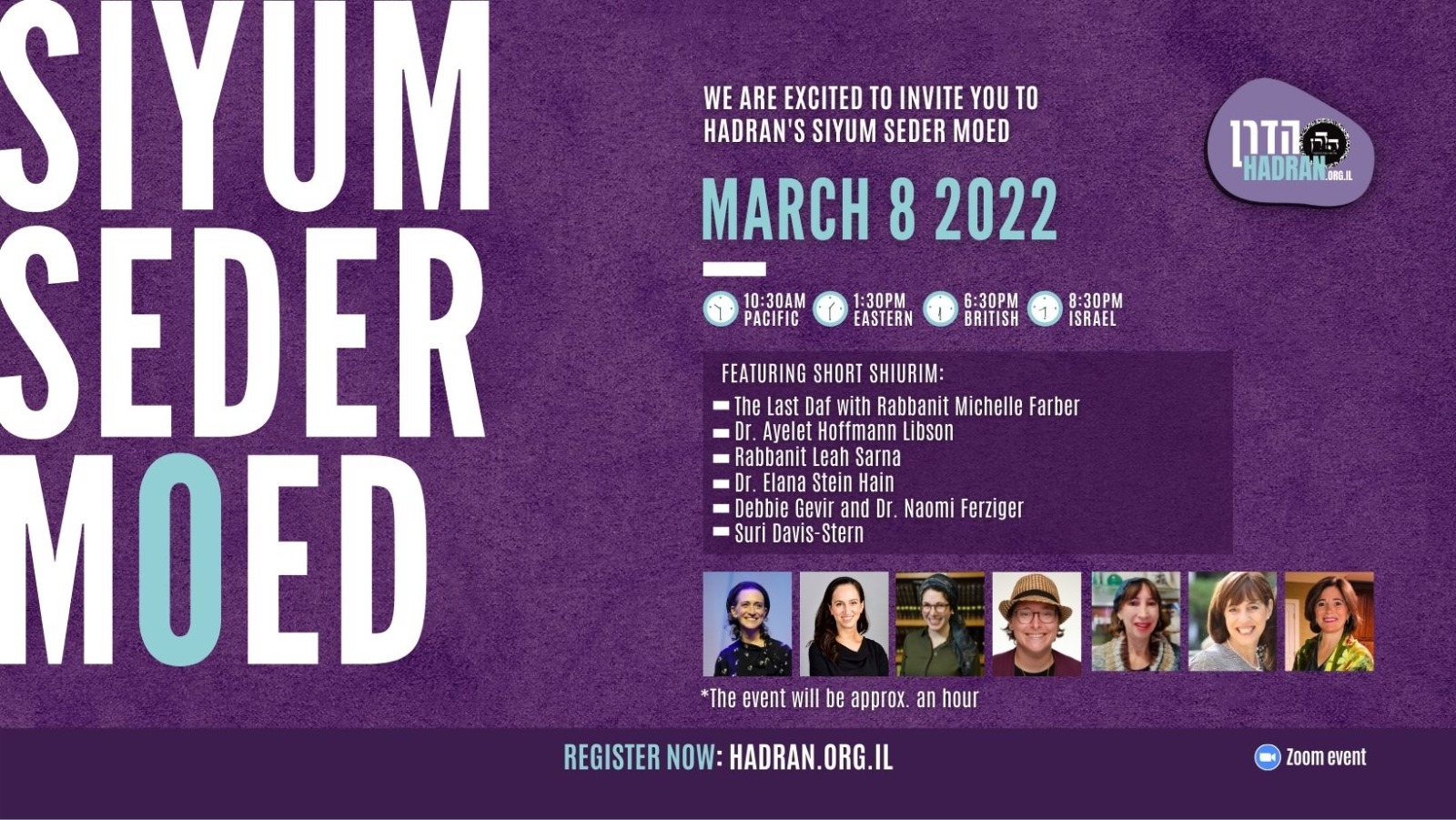In offerings that have several parts, i.e. 2 lambs and 2 loaves of bread (Shavuot) or 2 bowls of frankincense and 2 sets of 6 loaves of the showbread, do pigul thoughts regarding part of the bread affect all of the bread? Additionally, since both lambs need to be slaugghtered to permit the bread, would a pigul thought during the slaughter of one of the animals, make the bread pigul or does one need to have the thought during the slaughtering of each of the animals?
This week’s learning is sponsored by Robert and Paula Cohen in loving memory of Joseph Cohen, Yosef ben Moshe HaCohen, z”l. “He was hard working, loved to sing, esp. as a chazan, and was very dedicated to his family and community.”
Want to dedicate learning? Get started here:

Today’s daily daf tools:
This week’s learning is sponsored by Robert and Paula Cohen in loving memory of Joseph Cohen, Yosef ben Moshe HaCohen, z”l. “He was hard working, loved to sing, esp. as a chazan, and was very dedicated to his family and community.”
Today’s daily daf tools:
Delve Deeper
Broaden your understanding of the topics on this daf with classes and podcasts from top women Talmud scholars.
New to Talmud?
Check out our resources designed to help you navigate a page of Talmud – and study at the pace, level and style that fits you.
The Hadran Women’s Tapestry
Meet the diverse women learning Gemara at Hadran and hear their stories.
Menachot 14
אֶלָּא אִי אָמְרַתְּ תְּרֵי גּוּפֵי נִינְהוּ – מִי מִיצְטָרְפִי?
But if you say that Rabbi Yosei holds that the right and left thighs of an offering are considered two distinct bodies, and therefore piggul intent with regard to one does not render the other piggul, then in the case of the two loaves, would the intentions concerning both loaves combine to render them both piggul?
הָא מַנִּי? רַבִּי הִיא, דְּתַנְיָא: הַשּׁוֹחֵט אֶת הַכֶּבֶשׂ לֶאֱכוֹל חֲצִי זַיִת מֵחַלָּה זוֹ, וְכֵן חֲבֵירוֹ לֶאֱכוֹל חֲצִי זַיִת מֵחַלָּה זוֹ, רַבִּי אוֹמֵר: אוֹמֵר אֲנִי שֶׁזֶּה כָּשֵׁר.
Rav Huna responds: One cannot infer anything from this baraita with regard to the opinion of Rabbi Yosei, as in accordance with whose opinion is this baraita? It is in accordance with the opinion of Rabbi Yehuda HaNasi, as it is taught in another baraita: With regard to one who slaughters one of the lambs brought as peace offerings on Shavuot with the intent to consume half an olive-bulk from this loaf the next day, and similarly, he slaughtered the other lamb with the intent to consume half an olive-bulk from that second loaf the next day, Rabbi Yehuda HaNasi says: I say that this offering is valid, as his intentions do not combine.
טַעְמָא דְּאָמַר ״חֲצִי חֲצִי״, אֲבָל אָמַר ״כְּזַיִת מִשְּׁתֵּיהֶן״ – מִצְטָרֵף.
Rav Huna continues: It may be inferred that the reason why the priest’s intentions do not combine is that his intent was said with regard to a half and a half, i.e., he slaughtered each lamb with the intent to consume half an olive-bulk from one loaf the next day. But if he said during the slaughter of each of the lambs that he is slaughtering it with the intent to consume an olive-bulk from both of them, then the halves combine to render the offering piggul.
וְרַבִּי, אַלִּיבָּא דְּמַאן? אִי אַלִּיבָּא דְּרַבָּנַן – אֲפִילּוּ בְּאַחַת מֵהֶן נָמֵי! אִי אַלִּיבָּא דְּרַבִּי יוֹסֵי – הָדַר קוּשְׁיַין לְדוּכְתֵּיהּ.
The Gemara asks: And as for Rabbi Yehuda HaNasi, who says that the two loaves are piggul only if he has intent with regard to an amount equal to an olive-bulk from both of them combined, in accordance with whose opinion is his statement? If it is in accordance with the opinion of the Rabbis of the mishna, who hold that piggul intent with regard to one loaf renders both loaves piggul, then even if his intent was with regard to only one of them, both loaves should be piggul. And if it is in accordance with the opinion of Rabbi Yosei, who holds that piggul intent with regard to one loaf does not render the second loaf piggul, then our difficulty returns to its place: If Rabbi Yosei holds that the right and left thighs are considered two distinct bodies, how can intentions with regard to two halves of an olive-bulk combine to render both loaves piggul?
לְעוֹלָם אַלִּיבָּא דְּרַבָּנַן, וְלָא תֵּימָא ״עַד שֶׁיְּפַגֵּל בִּשְׁתֵּיהֶן״, אֶלָּא [אֵימָא] ״עַד שֶׁיְּפַגֵּל בִּשְׁנֵיהֶן״, וַאֲפִילּוּ בְּאַחַת מֵהֶן.
The Gemara responds: Actually, Rabbi Yehuda HaNasi’s statement is in accordance with the opinion of the Rabbis. And do not say that the baraita states: It is not piggul unless one has the intent of piggul with regard to both of them [bishteihen], in the feminine form, whereby the baraita would be referring to the loaves. Rather, the baraita states: With regard to both of them [bishneihen], in the masculine form, i.e., unless he slaughters both lambs with piggul intent, and in such a case, even if his intent was with regard to only one of the loaves, the offering is piggul.
וּלְאַפּוֹקֵי מִדְּרַבִּי מֵאִיר, דְּאָמַר: מְפַגְּלִין בַּחֲצִי מַתִּיר, קָא מַשְׁמַע לַן דְּלָא.
The Gemara adds: And this baraita serves to exclude the opinion of Rabbi Meir, who says in the mishna on 16a: One renders an offering piggul by means of intent during the sacrifice of half a permitting factor, e.g., if one slaughtered one of the lambs with the intent to consume the two loaves the next day, the loaves are piggul. This baraita teaches us that this is not the halakha.
אִי הָכִי, מַאי ״לְעוֹלָם״? אִי אָמְרַתְּ בִּשְׁלָמָא בִּשְׁתֵּיהֶן וּבִשְׁנֵיהֶן, וְרַבִּי יוֹסֵי הִיא, וּלְאַפּוֹקֵי מִדְּרַבִּי מֵאִיר וּמִדְּרַבָּנַן קָאָתֵי – הַיְינוּ דְּקָאָמַר ״לְעוֹלָם״.
The Gemara asks: If so, then what is the meaning of the emphasis in the baraita: There is never liability? Granted, this phrase is understandable if you say that the baraita means that the loaves are not piggul unless he has intent with regard to both of the loaves and both of the lambs, i.e., they are piggul only if he slaughters both lambs with the intention to partake of both loaves the next day. In that case the baraita is in accordance with the opinion of Rabbi Yosei, and it comes to exclude the statements of both Rabbi Meir and the Rabbis, and this is the reason that the baraita states: There is never liability, to emphasize that Rabbi Yosei disagrees with both of these opinions.
אֶלָּא אִי אָמְרַתְּ רַבָּנַן, וּלְאַפּוֹקֵי מִדְּרַבִּי מֵאִיר, מַאי ״לְעוֹלָם״?
But if you say that the baraita is in accordance with the opinion of the Rabbis and that it serves to exclude only the opinion of Rabbi Meir, for what reason does the baraita stress: There is never liability? The tanna would not use such a word to exclude merely one opinion. Rather, it must be that the baraita is in accordance with the opinion of Rabbi Yosei. If so, then the difficulty raised against Rav Huna, who says that piggul intent concerning the right thigh does not render the left one piggul, remains unresolved.
וְעוֹד, הָא אָמַר רַב אָשֵׁי: תָּא שְׁמַע, רַבִּי אוֹמֵר מִשּׁוּם רַבִּי יוֹסֵי: פִּיגֵּל בְּדָבָר הַנַּעֲשֶׂה בַּחוּץ – פִּיגֵּל, בְּדָבָר הַנַּעֲשֶׂה בִּפְנִים – לֹא פִּיגֵּל.
And furthermore, didn’t Rav Ashi say: Come and hear a refutation of the opinion of Rav Huna from a baraita: Rabbi Yehuda HaNasi says in the name of Rabbi Yosei that if, while performing the sacrificial rites for the bulls or goats which are burned as an offering, the priest had an intention that can render the offering piggul with regard to a matter that is performed outside the Sanctuary, i.e., in the Temple courtyard, he has rendered the offering piggul. If his intention was with regard to a matter that is performed inside the Sanctuary or the Holy of Holies, he has not rendered the offering piggul.
כֵּיצַד? הָיָה עוֹמֵד בַּחוּץ וְאָמַר: ״הֲרֵינִי שׁוֹחֵט עַל מְנָת לְהַזּוֹת מִדָּמוֹ לְמָחָר״ – לֹא פִּיגֵּל, שֶׁמַּחְשָׁבָה בַּחוּץ בְּדָבָר הַנַּעֲשֶׂה בְּפָנִים. הָיָה עוֹמֵד בִּפְנִים וְאָמַר: ״הֲרֵינִי מַזֶּה עַל מְנָת לְהַקְטִיר אֵימוּרִין לְמָחָר וְלִשְׁפּוֹךְ שִׁירַיִים לְמָחָר״ – לֹא פִּיגֵּל, שֶׁמַּחְשָׁבָה בִּפְנִים בְּדָבָר הַנַּעֲשֶׂה בַּחוּץ.
The baraita elaborates: How so? If he was standing outside when slaughtering the animal and said: I hereby slaughter the animal with the intention of sprinkling its blood tomorrow inside the Sanctuary, he has not rendered the offering piggul. The reason is that when one has an intention outside with regard to a matter that is performed inside, he has not rendered the offering piggul. Likewise, if he was standing inside when sprinkling, and said: I hereby sprinkle the blood of the sin offering in order to burn its sacrificial portions on the external altar tomorrow and to pour out its remainder on the base of the altar tomorrow, he has not rendered the offering piggul, as he had an intention inside with regard to a matter that is performed outside.
הָיָה עוֹמֵד בַּחוּץ, וְאָמַר: ״הֲרֵינִי שׁוֹחֵט עַל מְנָת לִשְׁפּוֹךְ שִׁירַיִים לְמָחָר וּלְהַקְטִיר אֵימוּרִין לְמָחָר״ – פִּיגֵּל, שֶׁמַּחְשָׁבָה בַּחוּץ בְּדָבָר הַנַּעֲשֶׂה בַּחוּץ.
But if he was standing outside and said: I hereby slaughter the animal with the intention to pour out the remainder of its blood tomorrow, or to burn its sacrificial portions tomorrow, he has rendered the offering piggul, as he had an intention outside with regard to a matter that is performed outside.
לִשְׁפּוֹךְ שִׁירַיִים, לְאִיפַּגּוֹלֵי מַאי? אִילֵימָא לְאִיפַּגּוֹלֵי דָּם – דָּם מִי מִיפַּגַּל? וְהָתְנַן: אֵלּוּ דְּבָרִים שֶׁאֵין חַיָּיבִין עֲלֵיהֶן מִשּׁוּם פִּיגּוּל: הַקּוֹמֶץ, וְהַלְּבוֹנָה, וְהַקְּטוֹרֶת, וּמִנְחַת כֹּהֲנִים, וּמִנְחַת נְסָכִים, וּמִנְחַת כֹּהֵן מָשִׁיחַ, וְהַדָּם!
The Gemara analyzes this baraita: With regard to the case where one slaughtered the offering with the intent to pour the remaining blood the next day, what could be rendered piggul? If we say the blood could be rendered piggul, one can ask: Does blood become piggul? But didn’t we learn in a mishna (Zevaḥim 42b): These are the items for which one is not liable to receive karet due to the prohibition of piggul: The handful; the frankincense; the incense; the meal offering of priests; the meal offering accompanying the libations brought with an animal offering; the meal offering of the anointed priest; and the blood?
אֶלָּא פְּשִׁיטָא לְאִפַּגּוֹלֵי בָּשָׂר, הַשְׁתָּא וּמָה הָתָם דְּלָא חַשֵּׁיב בֵּיהּ בְּבָשָׂר גּוּפֵיהּ, אָמַר רַבִּי יוֹסֵי מִיפַּגַּל, הָכָא דְּחַשֵּׁיב בֵּיהּ בְּזֶבַח גּוּפֵיהּ, לֹא כׇּל שֶׁכֵּן דְּפִיגֵּל בְּיֶרֶךְ יָמִין פִּיגֵּל בְּיֶרֶךְ שְׂמֹאל?
Rather, it is obvious that the baraita means that it is the meat of the offering that could be rendered piggul. Now consider: And if there, in the baraita, where he did not have intent with regard to the meat itself, as his intention was not to partake of the meat the next day but to pour the remaining blood the next day, and yet Rabbi Yosei said that the meat is rendered piggul; then here, where he has intent to partake of the right thigh the next day, which is part of the offering itself, is it not all the more so that if he had intent of piggul with regard to the right thigh, he has rendered the left thigh piggul as well?
וְעוֹד, הָאָמַר רָבִינָא: תָּא שְׁמַע, הַקּוֹמֵץ אֶת הַמִּנְחָה לֶאֱכוֹל שְׁיָרֶיהָ אוֹ לְהַקְטִיר קוּמְצָהּ לְמָחָר, מוֹדֶה רַבִּי יוֹסֵי בָּזוֹ שֶׁפִּיגֵּל וְחַיָּיבִין עָלָיו כָּרֵת.
And furthermore, doesn’t Ravina say: Come and hear a refutation of the statement of Rav Huna from the mishna (13a): In the case of one who removes a handful from the meal offering with the intent to partake of its remainder or to burn its handful on the next day, Rabbi Yosei concedes in this instance that he has rendered the offering piggul and he is liable to receive karet for partaking of it.
לְהַקְטִיר קוּמְצָהּ, לְאִיפַּגּוֹלֵי מַאי? אִילֵימָא לְאִיפַּגּוֹלֵי קוֹמֶץ, קוֹמֶץ מִי מִיפַּגַּל? וְהָתְנַן: אֵלּוּ דְּבָרִים שֶׁאֵין חַיָּיבִין עֲלֵיהֶן מִשּׁוּם פִּיגּוּל: הַקּוֹמֶץ כּוּ׳! אֶלָּא פְּשִׁיטָא לְאִיפַּגּוֹלֵי שִׁירַיִים. הַשְׁתָּא וּמָה הָתָם, דְּלָא חַשֵּׁיב בְּהוּ בְּשִׁירַיִים גּוּפֵיהּ,
Ravina continues: When one removes the handful with the intent to burn its handful, what could be rendered piggul? If we say that the handful could be rendered piggul, does the handful become piggul? But didn’t we learn in a mishna (Zevaḥim 42b): These are the items for which one is not liable to receive karet due to the prohibition of piggul: The handful, etc. Rather, it is obvious that the remainder could be rendered piggul. Now consider: And if there, in the mishna, where he did not have intent with regard to the remainder itself, i.e., to partake of the remainder the next day,
מִיפַּגְּלִי – הָכָא דְּחַשֵּׁיב בְּהוּ בִּזְבִיחָה גּוּפַהּ, לֹא כׇּל שֶׁכֵּן?
and yet Rabbi Yosei said that the remainder is rendered piggul; then here, where he has intent to partake of the right thigh the next day, which is part of the offering itself, is it not all the more so that both thighs should become piggul?
אֶלָּא אָמַר רַבִּי יוֹחָנָן: הַיְינוּ טַעְמָא דְּרַבִּי יוֹסֵי – הַכָּתוּב עֲשָׂאָן גּוּף אֶחָד, וְהַכָּתוּב עֲשָׂאָן שְׁנֵי גּוּפִין; גּוּף אֶחָד – דִּמְעַכְּבִי אַהֲדָדֵי, שְׁנֵי גּוּפִין – דְּאָמַר רַחֲמָנָא: הָא לְחוֹדַהּ עֲבִידָא וְהָא לְחוֹדַהּ עֲבִידָא.
Rather, Rabbi Yoḥanan said: Rabbi Yosei holds that intent of piggul with regard to one thigh renders the other thigh piggul as well, as they are of one body. Similarly, with regard to two loaves, Rabbi Yosei is of the opinion that if one intends to consume an amount equal to an olive-bulk from both loaves, both loaves are rendered piggul. And as for his statement that intent of piggul with regard to one loaf does not render the other loaf piggul, this is the reasoning of Rabbi Yosei: The verse renders the two loaves one body, and the verse also renders them two bodies. The verse renders them one body in the sense that they preclude one another, i.e., neither loaf is valid without the other. The verse also renders them two bodies, as the Merciful One states: This loaf is prepared alone and that is prepared alone, i.e., the kneading and arrangement of each loaf must be performed separately.
עָרְבִינְהוּ – מִתְעָרְבִין, דְּהַכָּתוּב עֲשָׂאָן גּוּף אֶחָד; פַּלְגִינְהוּ מִיפַּלְגִי, דְּהַכָּתוּב עֲשָׂאָן שְׁנֵי גּוּפִין.
Therefore, if the priest mixed them together by intending to consume an olive-bulk from both of them, then they are mixed and they are both piggul, as the verse renders them one body. But if he separated them by having intent with regard to only one loaf, in that case they are separated and only that loaf is piggul, as the verse renders them two bodies.
בָּעֵי רַבִּי יוֹחָנָן: פִּיגֵּל בְּלַחְמֵי תוֹדָה מַהוּ, בְּמִנְחַת מַאֲפֶה מַהוּ? תְּנָא לֵיהּ רַב תַּחְלִיפָא מִמַּעְרְבָא: וְכֵן אַתָּה אוֹמֵר בְּלַחְמֵי תוֹדָה, וְכֵן אַתָּה אוֹמֵר בְּמִנְחַת מַאֲפֶה.
Rabbi Yoḥanan raises a dilemma: If one had intent of piggul with regard to one type of loaf from the loaves of a thanks offering, what is the halakha concerning the remaining types of loaves, i.e., are they rendered piggul as well? Similarly, if one had intent of piggul with regard to either the loaves or the wafers of baked meal offerings, what is the halakha with regard to the remaining type? Rav Taḥlifa from the West, i.e., Eretz Yisrael, taught him a baraita that states: And likewise you say with regard to the bread of a thanks offering, and likewise you say with regard to a baked meal offering, that the halakha is a matter of dispute between Rabbi Yosei and the Rabbis.
תָּנוּ רַבָּנַן: בִּשְׁעַת שְׁחִיטָה חִישֵּׁב לֶאֱכוֹל חֲצִי זַיִת, וּבִשְׁעַת זְרִיקָה חִישֵּׁב לֶאֱכוֹל חֲצִי זַיִת – פִּיגּוּל, מִפְּנֵי שֶׁשְּׁחִיטָה וּזְרִיקָה מִצְטָרְפִין.
§ The Sages taught in a baraita: If at the time of the slaughter of an offering one had intent to consume half an olive-bulk of its meat the next day, and at the time of the sprinkling of the blood he had intent to consume half of another olive-bulk of meat the next day, the offering is piggul, as intentions that occur during the slaughter and sprinkling combine to render an offering piggul.
אִיכָּא דְּאָמְרִי: שְׁחִיטָה וּזְרִיקָה, דְּתַרְוַויְיהוּ מַתִּירִין – אִין, קַבָּלָה וְהוֹלָכָה – לָא. וְאִיכָּא דְּאָמְרִי: הָנָךְ דִּמְרַחֲקָן, וְכׇל שֶׁכֵּן הָנֵי דִּמְקָרְבָן.
There is a dispute between amora’im with regard to the halakha of this baraita: Some say that in the case of intentions that occur specifically during the slaughter and sprinkling, as both of them are permitting factors of the offering, yes, the intentions combine. But intentions that occur during the collection of the blood in a service vessel and the conveying of the blood to the altar do not combine, as neither rite is a permitting factor. And some say that if intentions during those rites that are distant from one another, i.e., the slaughter and sprinkling, combine, all the more so intentions during these rites that are close to one another, i.e., collection and conveying, certainly combine.
אִינִי? וְהָא תָּנֵי לֵוִי: אַרְבַּע עֲבוֹדוֹת אֵין מִצְטָרְפוֹת לְפִיגּוּל, שְׁחִיטָה וּזְרִיקָה, קַבָּלָה וְהוֹלָכָה! אָמַר רָבָא, לָא קַשְׁיָא: הָא רַבִּי, הָא רַבָּנַן.
The Gemara asks: Is that so, i.e., that intentions during the slaughter and sprinkling combine? But Levi teaches in a baraita: Intentions that occur during the four sacrificial rites do not combine to render an offering piggul, and those rites are: Slaughter and sprinkling, collection and conveying. Rava said: It is not difficult; this statement of Levi is in accordance with the opinion of Rabbi Yehuda HaNasi, whereas that baraita is in accordance with the opinion of the Rabbis.
דְּתַנְיָא: הַשּׁוֹחֵט אֶת הַכֶּבֶשׂ לֶאֱכוֹל חֲצִי זַיִת מֵחַלָּה זוֹ, וְכֵן חֲבֵירוֹ לֶאֱכוֹל חֲצִי זַיִת מֵחַלָּה זוֹ, רַבִּי אוֹמֵר: אוֹמֵר אֲנִי שֶׁזֶּה כָּשֵׁר.
As it is taught in a baraita with regard to the two loaves and two lambs sacrificed on Shavuot: With regard to one who slaughters one of the lambs brought as peace offerings on Shavuot with the intent to consume half an olive-bulk from this loaf the next day, and similarly, he slaughtered the other lamb with the intent to consume half an olive-bulk from that second loaf the next day, Rabbi Yehuda HaNasi says: I say that this offering is valid. Clearly, Rabbi Yehuda HaNasi holds that intentions that occur during the performance of two permitting factors do not combine to render an offering piggul.
אֲמַר לֵיהּ אַבָּיֵי: אֵימַר דְּשָׁמְעַתְּ לֵיהּ לְרַבִּי – חֲצִי מַתִּיר וַחֲצִי אֲכִילָה, כּוּלּוֹ מַתִּיר וַחֲצִי אֲכִילָה מִי שָׁמְעַתְּ לֵיהּ?
Abaye said to Rava: You can say that you have heard that Rabbi Yehuda HaNasi holds that intentions do not combine to render an offering piggul when each intention is concerning half a permitting factor and half a measure of consumption, i.e., one lamb and half an olive-bulk. But in a case where one had intentions during the performance of an entire permitting factor, i.e., during the slaughter and sprinkling, and concerning half a measure of consumption, did you hear him say that such intentions do not combine?
אֲמַר לֵיהּ רָבָא בַּר רַב חָנָן לְאַבָּיֵי: וְאִי אִית לֵיהּ לְרַבִּי כּוּלּוֹ מַתִּיר וַחֲצִי אֲכִילָה, לִגְזוֹר חֲצִי מַתִּיר וַחֲצִי אֲכִילָה אַטּוּ כּוּלּוֹ מַתִּיר וַחֲצִי אֲכִילָה, דְּהָא רַבִּי יוֹסֵי גָּזַר וְרַבָּנַן גָּזְרִי!
Rava bar Rav Ḥanan said to Abaye: But if Rabbi Yehuda HaNasi is of the opinion that intentions during the performance of an entire permitting factor and concerning half a measure of consumption combine to render an offering piggul, why does he rule that when one slaughters each lamb with the intent to consume half an olive-bulk from one loaf the next day the offering is entirely valid? Let him decree that intentions during half a permitting factor and concerning half a measure of consumption disqualify an offering, due to the fact that intentions during an entire permitting factor and concerning half a measure of consumption render the offering piggul, as one finds in similar instances that Rabbi Yosei decreed and the Rabbis decreed in this manner.
רַבִּי יוֹסֵי גָּזַר, דִּתְנַן: לְהַקְטִיר לְבוֹנָתָהּ לְמָחָר, רַבִּי יוֹסֵי אוֹמֵר: פָּסוּל וְאֵין בּוֹ כָּרֵת, וַחֲכָמִים אוֹמְרִים: פִּיגּוּל וְחַיָּיבִין עָלֶיהָ כָּרֵת.
Rava bar Rav Ḥanan elaborates: Rabbi Yosei decreed in such a case, as we learned in a mishna (13a): With regard to one who removes a handful from the meal offering with the intent to burn its handful on the next day, everyone agrees that the meal offering is piggul. But if his intent was to burn its frankincense on the next day, Rabbi Yosei says: The meal offering is unfit, but partaking of it does not include liability to receive karet. And the Rabbis say: It is a case of piggul and one is liable to receive karet for partaking of the meal offering. Since one is not liable to receive karet, Rabbi Yosei evidently disqualifies the meal offering as a rabbinic decree due to concern over a case where his intention was to burn the handful the next day.
וְרַבָּנַן נָמֵי גָּזְרִי, דִּתְנַן: פִּיגֵּל בַּקּוֹמֶץ וְלֹא בַּלְּבוֹנָה, בַּלְּבוֹנָה וְלֹא בַּקּוֹמֶץ – רַבִּי מֵאִיר אוֹמֵר: פִּיגּוּל וְחַיָּיבִין עָלָיו כָּרֵת, וַחֲכָמִים אוֹמְרִים: אֵין בּוֹ כָּרֵת עַד שֶׁיְּפַגֵּל בְּכׇל הַמַּתִּיר.
And the Rabbis decreed as well, as we learned in a mishna (16a): If one had intent of piggul during the burning of the handful but not during the burning of the frankincense, or if he had such intent during the burning of the frankincense but not during the burning of the handful, Rabbi Meir says: The meal offering is piggul and one is liable to receive karet for its consumption, and the Rabbis say: There is no liability to receive karet for its consumption unless he has intent of piggul during the burning of the entire permitting factor, i.e., both the handful and the frankincense. Since the Rabbis state that there is no liability to receive karet, but they do not rule that the offering is valid, evidently they maintain that the offering is disqualified by rabbinic law, due to concern over a case of piggul intent during the burning of the entire permitting factor.
אֲמַר לֵיהּ: הָכִי הַשְׁתָּא? בִּשְׁלָמָא הָתָם, גָּזַר רַבִּי יוֹסֵי קוֹמֶץ דִּלְבוֹנָה אַטּוּ קוֹמֶץ דְּמִנְחָה.
Abaye said to Rava bar Rav Ḥanan: How can these cases be compared? Granted there, Rabbi Yosei decreed that the offering is disqualified in a case of intent involving the handful of frankincense due to the concern of intent involving the handful of the meal offering, as the two cases are similar.
רַבָּנַן גָּזְרִי קוֹמֶץ אַטּוּ קוֹמֶץ דְּמִנְחַת חוֹטֵא, וּלְבוֹנָה אַטּוּ לְבוֹנָה הַבָּאָה בְּבָזִיכִין.
Similarly, the Rabbis decreed that the offering is disqualified in a case of intent involving the handful due to a similar case of intent concerning the handful of the meal offering of a sinner. There is no frankincense in the case of a meal offering of a sinner, and consequently the priest’s intent with regard to the handful alone renders the offering piggul, as it is the sole permitting factor. And the Rabbis also decreed in a case of intent with regard to the frankincense due to a similar case of intent concerning the frankincense that comes in the bowls that accompany the shewbread. Here there is no handful, and consequently intent with regard to the frankincense alone renders the shewbread piggul.
כְּבָשִׂים נָמֵי, כֶּבֶשׂ אַטּוּ כֶּבֶשׂ חֲבֵירוֹ.
In the case of the two lambs that accompany the two loaves brought on Shavuot as well (16a), the Rabbis rule that if one slaughters one of the lambs with the intent to consume both loaves the next day the offering is disqualified, but one is not liable to receive karet for partaking of it. This is a rabbinic decree in a case of intent during the slaughter of one lamb due to the other lamb, as were one to slaughter both lambs with intent of piggul, the loaves would be rendered piggul, since his intent occurred during the slaughter of the entire permitting factor.
בָּזֵךְ, אַטּוּ בָּזֵךְ חֲבֵירוֹ.
Similarly, when one burns a single bowl of frankincense from those that accompany the shewbread with the intent to consume both arrangements of shewbread the next day, the Rabbis disqualify the shewbread by rabbinic decree due to the other bowl, i.e., due to the concern over piggul intent during the burning of both bowls, as this intent involves the burning of the entire permitting factor.
אֶלָּא הָכָא, מִי אִיכָּא חֲצִי מַתִּיר וַחֲצִי אֲכִילָה בְּעָלְמָא, דְּלֵיקוּם וְלִיגְזַר?
Abaye concludes: But here, in the case of the baraita where one slaughtered each of the two lambs with the intent to consume half an olive-bulk from a different loaf, is there another instance in general where intent during the performance of a rite concerning half a permitting factor and with regard to half a measure of consumption renders an offering piggul, that Rabbi Yehuda HaNasi will arise and decree that the lambs in this instance are disqualified?
הָכִי נָמֵי מִסְתַּבְּרָא, דְּטַעְמָא דְּרַבָּנַן מִשּׁוּם הָכִי הוּא, דְּקָתָנֵי סֵיפָא: מוֹדִים חֲכָמִים לְרַבִּי מֵאִיר בְּמִנְחַת חוֹטֵא וּמִנְחַת קְנָאוֹת שֶׁאִם פִּיגֵּל בַּקּוֹמֶץ שֶׁפִּיגּוּל, וְחַיָּיבִין עָלֶיהָ כָּרֵת, שֶׁהַקּוֹמֶץ הוּא הַמַּתִּיר.
The Gemara notes: So too, it is reasonable that the reasoning of the Rabbis is due to that explanation, i.e., they disqualified the offerings in the aforementioned cases due to the fact that in similar instances the offering is piggul. This is evident from the fact that it is taught in the latter clause of the mishna (16a): The Rabbis concede to Rabbi Meir in the case of the meal offering of a sinner and the meal offering of jealousy that if one had intent of piggul during the burning of the handful, the meal offering is piggul and one is liable to receive karet for its consumption, as the handful is the sole permitting factor.
הָא לְמָה לִי לְמִיתְנָא כְּלָל? פְּשִׁיטָא, מִי אִיכָּא מַתִּיר אַחֲרִינָא? אֶלָּא לָאו הָא קָא מַשְׁמַע לַן, דְּטַעְמָא דְּקוֹמֶץ מִשּׁוּם דְּאִיכָּא קוֹמֶץ דְּמִנְחַת חוֹטֵא דְּדָמֵי לֵיהּ.
The Gemara explains this proof: Why do I need the mishna to teach this last statement at all? Isn’t it obvious that these meal offerings are piggul, as is there another permitting factor aside from the handful? Rather, is it not correct to say that this is what the mishna teaches us, that the reason that the Rabbis disqualified a standard meal offering when only the handful was removed with the intent of piggul is because there is the case of the handful of the meal offering of a sinner, which is similar to it and is rendered piggul due to intent involving the handful alone?
מַתְנִי׳ נִטְמֵאת אַחַת מִן הַחַלּוֹת, אוֹ אֶחָד מִן הַסְּדָרִים – רַבִּי יְהוּדָה אוֹמֵר: שְׁנֵיהֶם יֵצְאוּ לְבֵית הַשְּׂרֵיפָה, שֶׁאֵין קׇרְבַּן צִיבּוּר חָלוּק. וַחֲכָמִים אוֹמְרִים: הַטָּמֵא בְּטוּמְאָתוֹ וְהַטָּהוֹר יֵאָכֵל.
MISHNA: If one of the two loaves of Shavuot or one of the two arrangements of the shewbread became ritually impure, Rabbi Yehuda says: Both must be taken to the place of burning like any other disqualified offering, as no communal offering is divided. That is, it is either fit in its entirety or unfit in its entirety. And the Rabbis say: The impure one remains in its state of impurity and the pure one shall be eaten.
גְּמָ׳ אָמַר רַבִּי אֶלְעָזָר: מַחְלוֹקֶת לִפְנֵי זְרִיקָה, אֲבָל לְאַחַר זְרִיקָה – דִּבְרֵי הַכֹּל הַטָּמֵא בְּטוּמְאָתוֹ וְהַטָּהוֹר יֵאָכֵל.
GEMARA: Rabbi Elazar says: The dispute between Rabbi Yehuda and the Rabbis applies only to a case where one loaf became ritually impure before the sprinkling of the blood of the lambs, as this is the act that renders the loaves permitted for consumption. Accordingly, they disagree whether the sprinkling is effective in permitting the remaining pure loaf for consumption. But in a case where one loaf was rendered impure after the sprinkling, meaning that both loaves were initially permitted for consumption, everyone agrees that the impure one remains in its state of impurity and the pure one shall be eaten.
וְלִפְנֵי זְרִיקָה, בְּמַאי פְּלִיגִי? אָמַר רַב פָּפָּא: בְּצִיץ מְרַצֶּה עַל אֲכִילוֹת קָא מִיפַּלְגִי,
The Gemara asks: And in the case where the loaves become impure before the sprinkling of the blood, with regard to what principle do they disagree? Rav Pappa said: They disagree with regard to the frontplate of the High Priest, i.e., whether it effects acceptance only for the impurity of items sacrificed on the altar, or even for the impurity of items that would normally be consumed by the priests.


